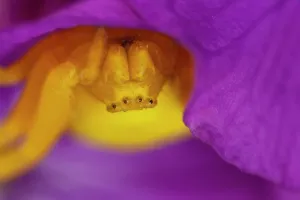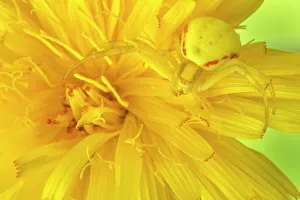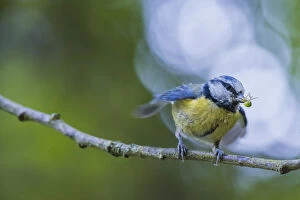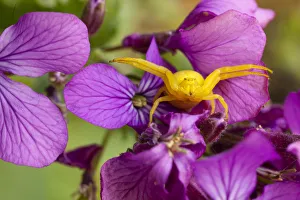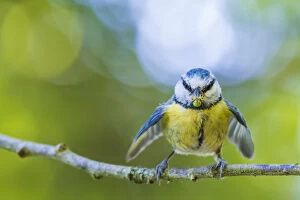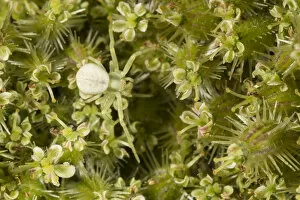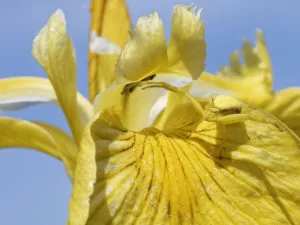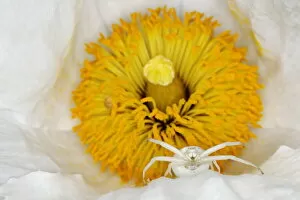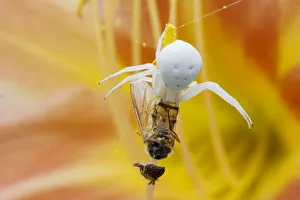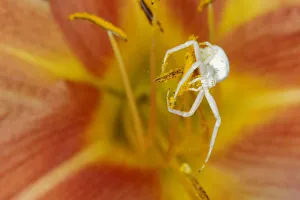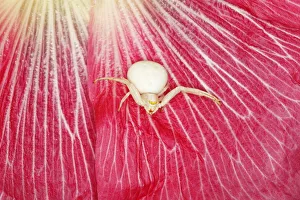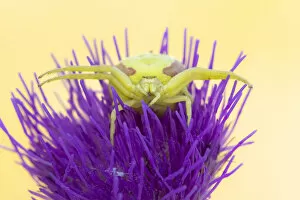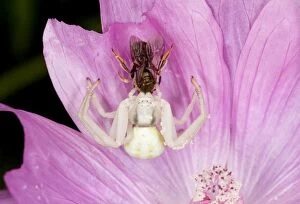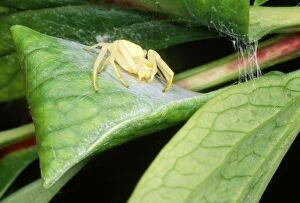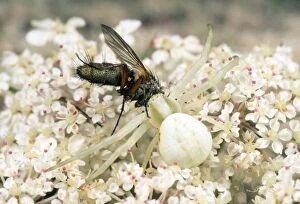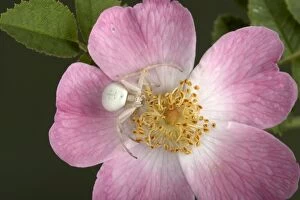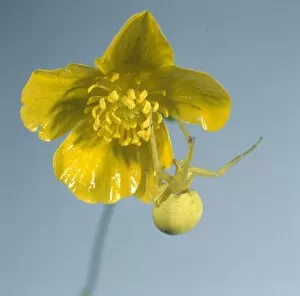Misumena Collection
The misumena, also known as the Goldenrod crab spider (Misumena vatia), is a fascinating creature that showcases its incredible camouflage skills on various flowers
All Professionally Made to Order for Quick Shipping
The misumena, also known as the Goldenrod crab spider (Misumena vatia), is a fascinating creature that showcases its incredible camouflage skills on various flowers. In Bristol, UK, a yellow female they are be seen perched delicately on an Honesty flower, blending seamlessly with its surroundings. Similarly, in the Austrian Alps during July, another misumena hides amongst yellow flowers to remain undetected. These crafty spiders are not only masters of disguise but also skilled hunters. A blue tit in action captures our attention as it brings back prey caught by a misumena to feed its hungry chicks. The nest becomes a hub of activity as these resourceful birds ensure their young ones are well-fed. Nature reserves provide ample opportunities for observing these remarkable creatures. At Meeth Quarry nature reserve in Devon, UK, we witness a golden-rod crab spider resting on a Rough hawkbit flower while waiting patiently for unsuspecting prey to come within reach. In Kenfig National Nature Reserve in Glamorgan, Wales, we find yet another female goldenrod crab spider camouflaged perfectly against the Yellow flag iris flower. Its stealthy approach ensures that any potential meal landing nearby will become an easy target. Essex in the UK offers several sightings of these unique spiders amidst different flowers such as Romneya and Hemerocallis. Their presence adds intrigue and beauty to these blooms while they patiently await their next victim. Whether it's Meadow thistle or Honesty flowers blooming in April or throughout the year like Hollyhock flowers - wherever there are insects attracted to nectar-rich blossoms - you may just spot one of these cunning predators lying in wait for their next meal. The misumena's ability to blend seamlessly into its environment serves both as protection from predators and an effective hunting strategy. These captivating creatures remind us of nature's intricate balance and how every organism has adapted uniquely to survive and thrive in their surroundings.

